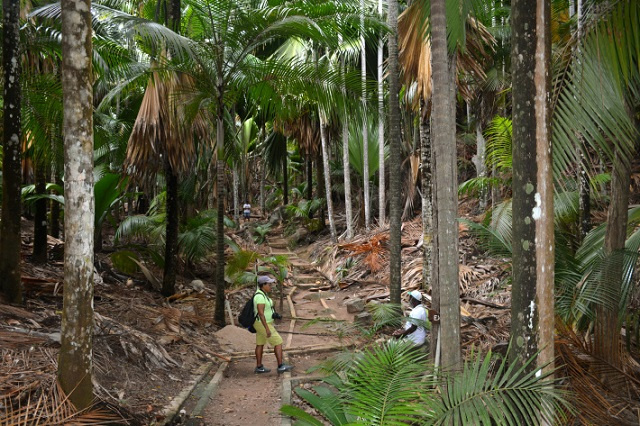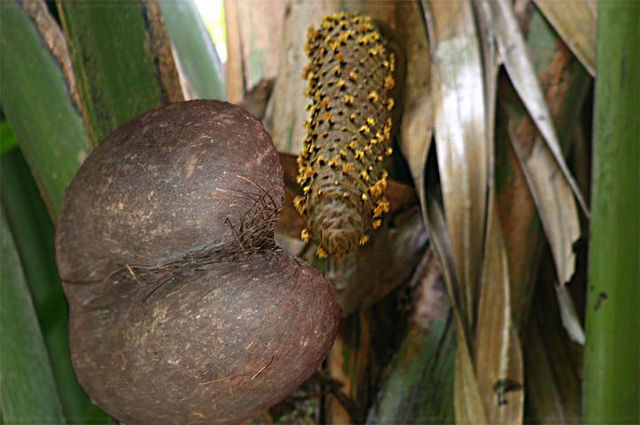Study reveals unique reproductive strategies of Seychelles' coco de mer

The coco de mer is the world's largest nut and is endemic to Seychelles. (Seychelles Nation)
A novel study by a researcher and her colleagues has determined that the endemic coco de mer plants prefer to undergo reproduction with a mate to which it is closely related, also referred to as inbreeding.
The coco de mer is the world's largest nut and is endemic to Seychelles, a group of 115 islands in the western Indian Ocean. It grows naturally only on two of Seychelles' islands, Praslin, and its neighboring Curieuse Island – in terrestrial and marine parks.
The coco de mer, which is listed as an endangered species by the International Union for Conservation of Nature (IUCN), is a dioecious plant meaning its reproductive male and female parts are found on separate plants.
According to a press statement from the Seychelles Islands Foundation (SIF), Dr Emma Morgan used microsatellite markers to determine the genetic composition of young coco de mer plants and match their potential parents at Vallee de Mai, Fond Peper, Fond Ferdinand, and Curieuse.
The results of this study showed that the coco de mer plants that produce surviving offspring have a strong preference for selecting closely related mates.
They also found that mother trees were often pollinated by several father trees and that the average distance between parent trees was just 26.8 metres. This suggests that it has a restricted pollen dispersal range, as well as short distance seed dispersal.
Inbreeding populations like the coco de mer would typically be characterised by lowered genetic diversity and reduced vigour and fitness of offspring.
However, despite having a high level of inbreeding and an intense fine-scale genetic structure (high genetic similarity between individuals), the coco de mer has relatively high genetic diversity.
The researchers explain that dioecious species like the coco de mer generally have a stronger spatial genetic structure, as compared to plants that have male and female reproductive parts on the same plant (monoecious), and because female trees are pollinated by several male trees.
 |
| Male and female coco de mer. (Brocken Inaglory, wiki commons) Photo License: CC BY-SA 3.0 |
The study further adds that the genetic structure of the coco de mer is maintained by pollinators that transfer pollen over mostly short distances.
Morgan believes "the implications of these results are very important for the conservation of the coco de mer. It is commonly assumed that endangered species can be helped by crossing distant individuals to help increase the genetic diversity and fitness of populations."
She added that the study shows that "the coco de mer doesn't follow this trend, and crossing too distant plants is likely to result in negative consequences. Understanding the reproductive ecology of the palm helps guide its management in an informed way".
Dr Frauke Fleischer-Dogley, SIF's chief executive officer, said, "Despite the coco de mer palm being one of the best-known flagship species of Seychelles, it is one of the least studied species in the country. This is mainly due to its very long-life cycle. Therefore, any new scientific knowledge will help to better understand the species and its requirements to better manage and protect it."
Although inbreeding poses a serious threat to many plant species, especially those that used to occur in large, fragmented populations, its significance may be less critical for species like the coco de mer that have a high genetic diversity, where limited seed and pollen dispersal is normal.
Nevertheless, continued conservation efforts and further research are needed to inform the management and conservation efforts of the coco de mer.





